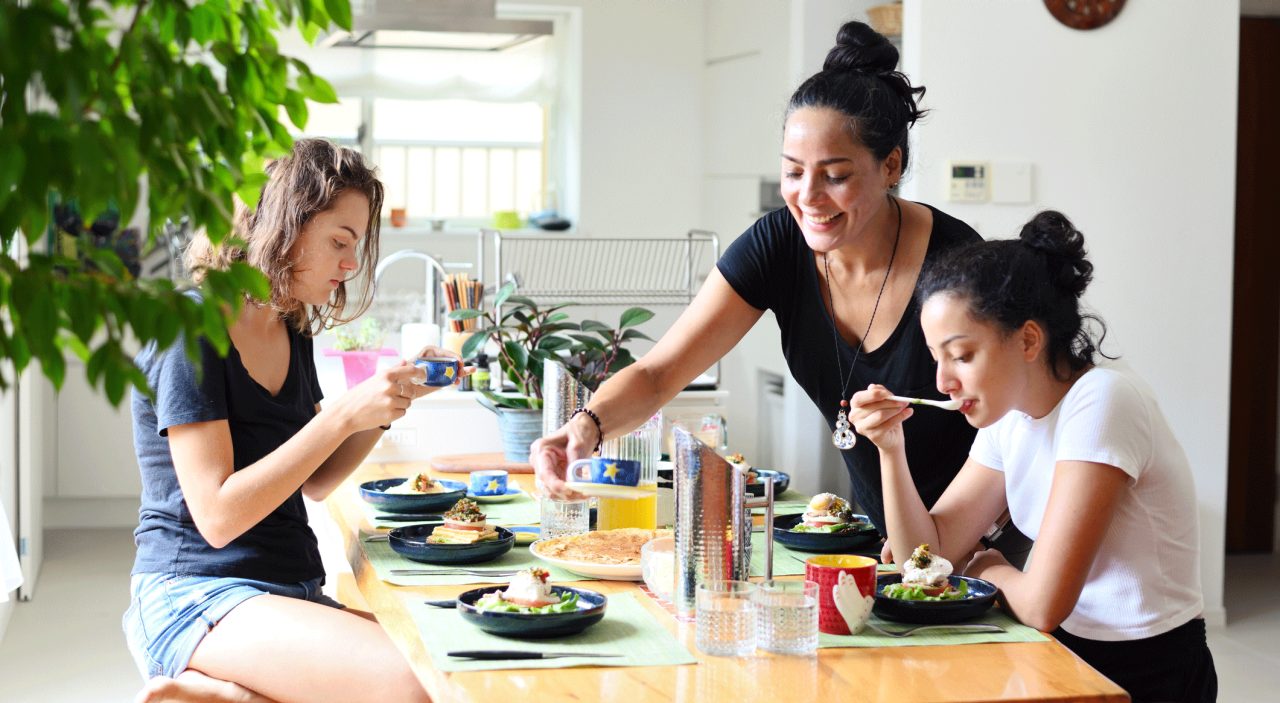How to Boost Your Teen’s Mood with a Better Diet

Eating vegetables and fruits every day could lighten your child’s blues. Here’s how you can boost your teen’s mood with better food.
Parents need to pick their battles. But steering your child to eat more vegetables and less junk is a good battle to have.
The teenage and early 20s years are a time when depression is more likely — and a moment that can establish habits for a lifetime. Your child could get quick results, too, which helps reinforce change. Last year, an Australian team reported that in just three weeks, young people showing signs of moderate depression improved their mood after changing their diets, while also reporting less anxiety.
This was a top-quality study, randomized with a control group and peer-reviewed for a top journal, PLOS ONE. Although there were only 38 participants in each of two groups, the study had a big advantage: Participants kept current records of what they ate. Most studies ask participants to recall their diet, which isn’t as accurate.
YOU MIGHT ALSO LIKE: Our Nutrition section
Here’s how it worked
The researchers recruited college students who reported symptoms of moderate depression on questionnaires and evidence of a poor diet. Then they split up the volunteers. For three weeks, the control group was told to eat as usual. The other group was told to follow instructions from a 13-minute video describing a Mediterranean-style diet.
The goal each day
Researchers wanted participants to eat:
- At least five servings of vegetables
- Two to three fruits
- Three servings of wholegrain cereals
- Three servings of a lean protein and three of unsweetened dairy
- Three tablespoons of nuts and seeds
- Two tablespoons of olive oil
A teaspoon most days of turmeric and cinnamon. Fish was on the menu at least three times a week.
They were told to stay away from refined carbohydrate, sugar, fatty or processed meats, and soft drinks. They also received sample meal plans and recipes and a small hamper of food items — olive oil, natural nut butter, walnuts, almonds, pepitas, sunflower seeds, and cinnamon and turmeric. To receive a $60 gift card, they had to keep their shopping receipts. Participants in the diet-change group also received a brief, 5-minute phone call on Day 7 and Day 14, to ask if they were having any difficulties adhering to the diet and troubleshoot.
Some of the volunteers were taking antidepressants, and they were required to have been on the same medication for two weeks before the study and remain on it during the study.
Helping your child
If you can only shift your child so far, focus on fruits and veggies. The healthy-eating group in the study consumed about six more servings of fruits and vegetables a week compared to the controls. Volunteers who increased their fruit and vegetables the most had the biggest improvement in depression.
The Australian study couldn’t rule out the placebo effect: if you tell people they’re doing something that could make them feel cheerier, they get a boost. Unlike in studies of medication, where volunteers can receive a fake pill (placebo), a diet study can’t fool you about what you’re eating. However, this study is part of a growing body of science backing the Mediterranean diet’s benefits for mood. In 2019 a meta-analysis of 16 randomized controlled trials published through March, 2018, concurred. A 2017 meta-analysis of 21 studies reached a similar conclusion, as did a 2013 meta-analysis of 22 previously published studies.
So how can you build the healthy-eating habit in your child? It may mean that you, too, need to better your diet game, setting that good example. But shouldn’t you do that anyway? For starters have a vegetable with every meal and a fruit for dessert. You might try new fruits and vegetables together. Eating meals together as a family will help you know what your child is actually consuming. Keep cut-up fruits and vegetables in plastic containers so they’re easy to grab, with a few plastic bags of your child’s favorites so she can take them with her as she heads out. Try baby carrots, celery sticks, and orange segments. Apples do better if you don’t cut them up.
To make produce fun, take your child to an outdoor market or a grocery store with lots of variety. In the northeast in the fall, you might have your pick of 10 kinds of apples. A Korean market will have many varieties of mushrooms, tofu, and variations on bok choy and other greens you’ve never seen before. Farmers Markets in all regions of the United States offer a bounty of locally-grown, fresh fruits and vegetables.
You can use vegetables in surprising ways. Putting raw cauliflower in a food processor can give it a texture much like rice (heat it up in the microwave or your stove afterwards). Put cooked spinach, onions, mushrooms, or even carrots in a meatloaf.
You might let your child keep on hand a variety of favorite salad dressings to dip veggies into or to drench a salad. They’re not ideal if you’re aiming to lose weight, but if that’s less important than eating vegetables go for it.
Some things that don’t count as a fruit or vegetable serving: pickles, ketchup, the lettuce and tomato on a sandwich, onion rings, olives, vegetable crisps, and any kind of potato other than a sweet potato. When it comes to fruit, a ready-made fruit yogurt, strawberry shortcake or fruit pie, and wine don’t count. If you put your own berries on yogurt, that does count. Smoothies are a mixed bag. They do give you fruit (and veggies if you add them in), but you’ll be getting a big dose of sugar. Don’t make it a daily thing!
Updated:
August 17, 2020
Reviewed By:
Janet O’Dell, RN